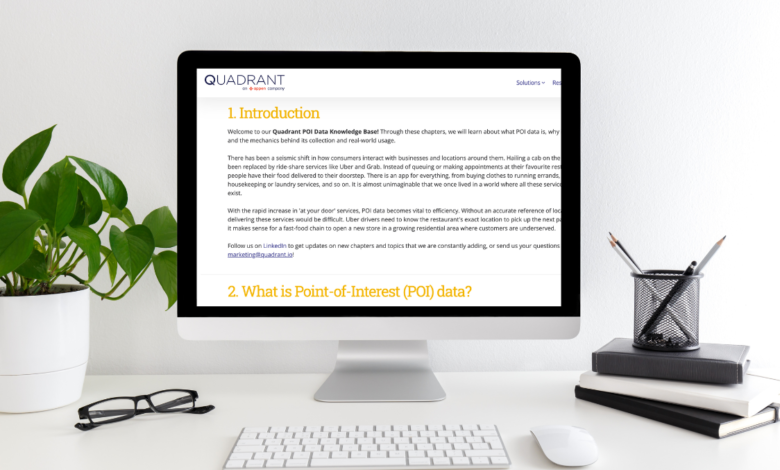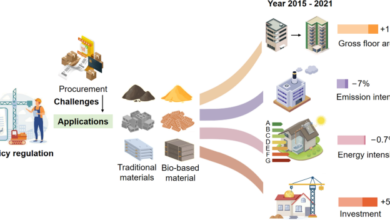Preventing Costly Errors in Geospatial Platforms with Verified POI Data

As industries increasingly rely on geospatial platforms to make data-driven decisions, ensuring accuracy in Points of Interest (POI) data is critical. Whether it’s logistics companies optimizing delivery routes, rideshare services coordinating pickups, or telecom providers planning infrastructure expansions, inaccuracies in POI data can lead to inefficiencies, delays, and financial losses. Verified POI data, therefore, plays a vital role in preventing these costly errors, ensuring that businesses operate smoothly and that their services remain reliable.
POI data refers to the specific geographic locations of places that hold significance, such as restaurants, hospitals, retail stores, or transportation hubs. This information is crucial for various sectors, including logistics, e-commerce, urban planning, telecommunications, and transportation (click here for an example). These industries rely on geospatial platforms to visualize and analyze spatial relationships and optimize their operations based on accurate geographic data.
For example:
- Logistics companies use POI data to plan the most efficient routes for deliveries, minimizing fuel costs and delivery times.
- Telecom companies utilize POI data to determine where new infrastructure, like cell towers or fiber optic lines, should be built to serve growing populations.
- Retailers rely on POI data to identify high-traffic areas for new store locations or marketing strategies.
Without accurate POI data these operations can suffer significantly. Errors can range from vehicles arriving at the wrong location, communication infrastructure being built in suboptimal areas, or customers receiving inaccurate delivery estimates, leading to frustration and potential loss of business.
Common Errors Caused by Inaccurate POI Data
The consequences of using inaccurate or outdated POI data can be widespread and costly. Below are some common errors that can arise:
- Misleading Addresses or Coordinates: If a geospatial platform uses incorrect or outdated POI data, it may direct logistics or service teams to the wrong location. This could result in delayed deliveries, missed service appointments, or incomplete routes for fleets.
- Overlooked or Misplaced Landmarks: In urban planning or infrastructure development, missing or misplacing landmarks in geospatial data can lead to poorly executed projects. For instance, a telecom company may install infrastructure in areas that do not serve the intended customer base, wasting resources and time.
- Inaccurate Traffic Flow Predictions: In industries like e-commerce or transportation, businesses rely on accurate traffic and population density data to predict customer behavior and optimize service routes. Incorrect POI data can lead to traffic jams, delayed services, or missed customer interactions.
- Faulty Analysis in Marketing and Retail: Retailers and marketers use POI data to identify where their target audience frequents. If this data is inaccurate, they might invest resources in areas with low returns or miss out on high-opportunity locations.
Verified POI Data: The Solution to Preventing Errors
Given the significant impact of inaccurate POI data, the importance of using verified data becomes clear. Verified POI data refers to location information that has been cross-referenced, audited, and confirmed for accuracy. It goes through both automated processes and human verification to ensure that it reflects the actual location, type, and status of a point of interest.
Here’s how verified POI data prevents costly errors across various industries:
Reliable Routing and Delivery for Logistics and Transportation
Verified POI data allows logistics companies and transportation services to plan efficient routes by providing accurate location information. With precise geographic data, businesses can ensure that drivers and fleet operators arrive at the correct destinations without delays or detours. This reduces fuel consumption, optimizes delivery schedules, and enhances customer satisfaction.
For instance, a logistics company might need to deliver to a new shopping mall. If the POI data is inaccurate or incomplete, drivers could struggle to find the entrance or even end up at the wrong location. Verified data prevents this by providing the most up-to-date and accurate information, improving the entire delivery process.
Optimized Infrastructure Placement for Telecommunications
In the telecom industry, infrastructure planning relies heavily on geographic data. Verified POI data helps telecom providers make informed decisions on where to place critical infrastructure like cell towers, fiber optic lines, or 5G antennas. This ensures maximum coverage and service quality while avoiding unnecessary or inefficient investments in areas with low demand.
Telecom providers also benefit from verified POI data when expanding services to rural or underserved regions. Accurate data ensures that resources are directed to areas that truly need them, enhancing service delivery and customer satisfaction.
Improved Urban Planning and Development
Urban planning is a complex process that requires accurate geographic data for the best results. With verified POI data, city planners can make well-informed decisions about where to build new public facilities, transportation hubs, and commercial zones. Accurate POI data also helps planners assess population density, traffic patterns, and the accessibility of different locations, allowing them to design cities that are more efficient and livable.
For example, in planning a new bus route, verified POI data ensures that the route serves key points of interest, such as hospitals, schools, and shopping centers, while avoiding areas of low demand. This maximizes public transportation usage and reduces unnecessary costs.
Enhanced Marketing and Retail Strategy
In the retail and marketing sectors, understanding where potential customers are likely to spend their time is crucial for making data-driven decisions. Verified POI data enables businesses to target their audience more effectively, choose the best locations for new stores, and optimize advertising campaigns.
For example, a retailer planning to open a new store might use verified POI data to analyze foot traffic patterns, proximity to competitors, and accessibility from major roads. By using accurate data, they can choose a location that maximizes exposure and revenue potential while avoiding areas that may not have sufficient customer demand.
Accurate Analytics for Business Intelligence
Verified POI data is also essential for business intelligence and analytics. Companies often use geographic data to understand market trends, customer behaviors, and operational performance. Inaccurate data can skew analysis, leading to poor business decisions. Verified POI data, however, provides a reliable foundation for generating actionable insights.
For instance, businesses can use verified data to analyze the performance of specific retail locations, determine the best areas for marketing campaigns, and assess how changes in population density affect demand for services. This level of precision is only possible with accurate, verified data that reflects real-world conditions.
The Role of AI and Human Verification in Ensuring POI Accuracy
To ensure the accuracy of POI data, many geospatial platforms utilize a combination of AI-driven automation and human verification. AI can quickly process large datasets, identify inconsistencies, and flag potential errors. However, human verification is often necessary to confirm the final accuracy of the data, especially for more complex or ambiguous locations.
- AI in POI Verification: AI algorithms can analyze vast amounts of data to detect inconsistencies, missing information, or changes in geographic conditions. AI tools are particularly effective at handling real-time updates, ensuring that new developments, such as the opening of a new shopping mall or the closure of a business, are reflected in the data.
- Human Verification: While AI can identify potential issues, human verification provides the final layer of accuracy. Human verifiers cross-reference data from multiple sources, conduct site visits, or review satellite imagery to confirm the precise location and status of points of interest. This additional verification step ensures that the data is reliable and trustworthy.





